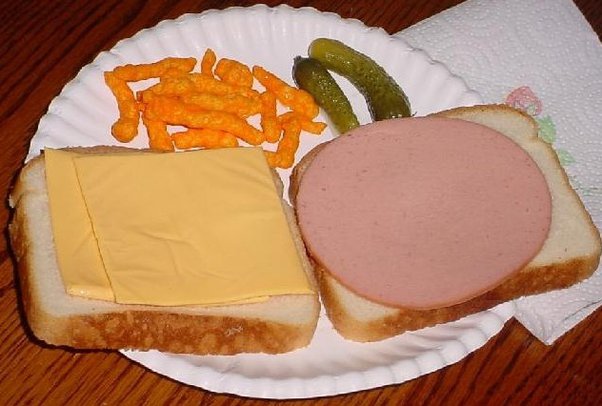Introduction: Understanding What “White People Food” Really Means

When people hear the term “white people food,” it often sparks curiosity, humor, or even debate. But what exactly does it mean? Is it about bland dishes, simple flavors, or certain cultural eating habits? The truth is, white people food is much more than a stereotype—it’s a reflection of Western culinary traditions, cultural evolution, and a long history of food innovation.
From classic casseroles to avocado toast, white people food represents a wide range of dishes influenced by European roots, American creativity, and global fusion. In this article, we’ll unpack the origins, characteristics, misconceptions, and global influence of white people food. So grab a fork and get ready to explore this fascinating cultural cuisine!
What Is “White People Food”?
At its core, white people food refers to dishes that are traditionally associated with Western or European-descended cultures—especially from countries like the United States, United Kingdom, Canada, France, Germany, and other parts of Europe.
It’s not about race or exclusion; rather, it’s a lighthearted cultural term that describes certain food habits, cooking styles, and preferences often found in white-majority societies.
Common examples of white people food include:
- Salads (like Caesar salad or cobb salad)
- Casseroles (tuna, green bean, or potato-based)
- Sandwiches (especially turkey or ham and cheese)
- Pasta dishes (like macaroni and cheese)
- Breakfast foods (like pancakes, oatmeal, or scrambled eggs)
- Light snacks (such as hummus, pretzels, or kale chips)
While the term may sound humorous, it highlights how cultural backgrounds shape what people eat and consider “normal” food.
The Origins of White People Food
To understand white people food, we need to travel back through history.
European settlers who migrated to North America brought their food traditions with them—simple, hearty meals made from local grains, meats, and vegetables. Over time, these dishes evolved as new ingredients and cooking methods became available.
Key historical influences include:
- European Heritage: British, German, Irish, and Scandinavian immigrants shaped early American cuisine with recipes for pies, stews, and roasts.
- Industrial Revolution: The rise of canned goods, frozen foods, and processed ingredients made cooking faster and more convenient.
- Post-War America: After World War II, families embraced ready-made meals, casseroles, and microwave dinners—creating the foundation of many “white people foods” we know today.
What started as survival cooking turned into a distinct cultural identity centered around comfort, convenience, and community.
Common Traits of White People Food
While there’s no single definition, certain traits often appear across white people food. These traits reveal the lifestyle, priorities, and creativity of Western cultures.
| Characteristic | Description | Examples |
| Mild Flavors | Prefers subtle tastes over heavy spices | Mashed potatoes, roast chicken |
| Convenience | Focus on easy, quick-to-make meals | Sandwiches, pasta salads |
| Comfort-Oriented | Food that feels familiar and satisfying | Mac & cheese, casseroles |
| Health-Conscious Trends | Modern focus on organic and balanced eating | Avocado toast, quinoa bowls |
| Cultural Fusion | Blending cuisines from other countries | Tex-Mex tacos, sushi burritos |
These characteristics show that white people food evolves with time, adopting new influences while keeping old favorites alive.
Popular Examples of White People Food
Let’s dig into some of the most beloved examples of white people food—from traditional comfort meals to trendy café favorites.
1. Avocado Toast
This Instagram-famous breakfast represents modern white people food perfectly: healthy, minimal, and aesthetically pleasing. It combines simple ingredients—bread, avocado, and a dash of salt or chili flakes—for a clean, fresh flavor.
2. Casseroles
Casseroles are the heart of white home cooking. These one-pan wonders often mix leftovers, canned soup, cheese, and pasta into a creamy, baked dish. They symbolize comfort and practicality—especially popular in Midwest America.
3. Macaroni and Cheese
A creamy blend of pasta and cheese sauce, mac & cheese is a classic comfort food that crosses generations. While originally a European dish, it became an American staple—often baked with breadcrumbs for extra crunch.
4. Potato Salad
A barbecue or picnic essential, potato salad reflects the simple joy of white people food. With mayonnaise, boiled eggs, and a sprinkle of herbs, it’s rich yet mild—an easy crowd-pleaser.
5. Kale Smoothies and Salads
Modern health-conscious white people food often includes kale—a superfood embraced by many wellness trends. Blended into smoothies or tossed with lemon and olive oil, it represents the “fit and green” eating culture.
Cultural Perceptions and Stereotypes
Now, let’s address the elephant in the room. The term “white people food” is sometimes used humorously to poke fun at perceived blandness or lack of spice. Memes about “unseasoned chicken” or “raisins in potato salad” have become popular online.
However, it’s important to remember that these jokes oversimplify a rich and evolving cuisine. Many white cooks and chefs experiment with global flavors, spices, and techniques. The reality is that white people food isn’t bland—it’s diverse, creative, and constantly changing.
Common stereotypes include:
- “It’s always under-seasoned.”
- “It’s all casseroles and mayonnaise.”
- “White people can’t handle spicy food.”
While these are playful exaggerations, they highlight differences in how cultures approach flavor, texture, and ingredients.
Health and Nutrition in White People Food
Over the years, white people food has undergone a major health transformation. Where once processed foods and sugary snacks dominated, now many Western eaters focus on clean eating, sustainability, and balance.
Modern health trends in white people food include:
- Organic and farm-to-table ingredients
- Plant-based diets and vegan options
- Low-carb and gluten-free alternatives
- Smoothie bowls, oats, and quinoa dishes
- Sustainable seafood and lean proteins
For example, the rise of avocado toast and acai bowls shows how wellness and aesthetics have blended in modern eating habits. Today’s white people food often emphasizes freshness, minimalism, and Instagram-worthy presentation.
Influence of White People Food Around the World
It has shaped global eating habits in powerful ways. From fast food to fine dining, Western culinary traditions dominate international food culture.
Global influences include:
- Fast Food Chains: Brands like McDonald’s, Subway, and KFC spread Western-style food across continents.
- Baking and Dairy: Bread, pastries, and cheese became staples in many non-Western diets.
- Fusion Cuisine: White chefs adapted Asian, Latin, and African dishes to suit Western tastes—creating a global exchange of flavors.
Interestingly, white people food also borrows from other cultures. Think of “California sushi rolls,” “Tex-Mex tacos,” or “butter chicken pizza.” It’s a two-way street of culinary creativity that connects people across continents.
White People Food vs. Other Cultural Foods
Food reflects identity, and every culture adds its own spice—literally and figuratively. Comparing It to other cuisines reveals how diverse global eating habits really are.
| Aspect | White People Food | Asian Food | Latin Food | African Food |
| Flavor Profile | Mild, buttery, creamy | Spicy, umami-rich | Bold, tangy, savory | Earthy, smoky, spicy |
| Ingredients | Dairy, grains, potatoes | Rice, noodles, soy | Corn, beans, peppers | Yams, plantains, meats |
| Cooking Style | Baking, grilling, boiling | Stir-frying, steaming | Roasting, stewing | Braising, grilling |
| Presentation | Simple, minimal | Decorative, balanced | Colorful, vibrant | Hearty, communal |
This comparison shows that while It may be known for simplicity, it still carries depth, comfort, and tradition in its own way.
The Evolution of White People Food
Food trends move fast, and It has adapted with every generation. From the meatloaf dinners of the 1950s to today’s oat milk lattes, the transformation is both cultural and technological.
Timeline of White People Food Evolution:
- 1900s–1940s: Traditional roasts, breads, and simple home cooking.
- 1950s–1970s: Rise of TV dinners, casseroles, and Jell-O salads.
- 1980s–1990s: Fast food explosion and packaged snacks.
- 2000s–2010s: Organic, gluten-free, and health-conscious meals.
- 2020s–Present: Plant-based, artisanal, and Instagram-friendly dishes.
Every phase shows how Western society mirrors its values through food—comfort, convenience, and creativity.
Why White People Food Matters
Beyond the jokes and memes, It plays an essential role in global culinary culture. It represents centuries of migration, adaptation, and cultural sharing.
Here’s why it matters:
- It reflects how cultures evolve and influence one another.
- It showcases innovation—from farm-to-table movements to food technology.
- It bridges communities through shared dining experiences.
Whether it’s a simple peanut butter sandwich or a gourmet charcuterie board, It continues to shape how the world eats today.
Conclusion: Celebrating the Diversity of White People Food
At the end of the day, It isn’t about race or limitations—it’s about culture, comfort, and creativity. It tells a story of generations who turned humble ingredients into timeless traditions.
From casseroles to kale salads, white people food continues to evolve, embracing global flavors while staying true to its comforting roots. So next time you enjoy a creamy mac & cheese or a crisp avocado toast, remember—you’re tasting history, innovation, and a culture that keeps reinventing itself.
Food connects us all, and white people food is just one flavorful chapter in the ever-growing book of world cuisine.
You may also read
Alan Autry Net Worth: A Complete Look at His Career, Success, and Legacy





